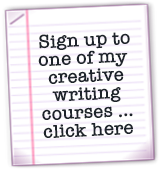Wendy Holden Q & A
Please tell us about your latest book?
Born Survivors tells the story of three young women pregnant by their husbands during World War Two and praying for a brighter future. Their babies were born weighing just three pounds within weeks of each other in the most horrendous of circumstances. By the time they arrived, the Nazis had killed their fathers and their mothers were ‘walking skeletons,’ living moment to moment in the same concentration camp. Somehow, all three women managed to survive. Against all the odds, their babies did too. Seventy years on and now living in America and Britain, these ‘siblings of the heart’ have come together for the first time to tell the remarkable stories of the three mothers who defied death to give them life. It has been published in 21 countries and translated into 16 languages so far. Without doubt, it is the most important book I will ever write.
How did you come across the story?
By luck. I was reading something late one night online about a woman who had died in Canada in her 90s. She had been a prisoner in Auschwitz – just like my three mothers –and had given birth to a baby there, which had died. It occurred to me then that I have never read anything about babies born in concentration camps and my research led me to Eva Clarke and her mother Anka. She lived just over one hour from me in Cambridge, England, and having spent an emotional day with her I asked if she would do me the honour of letting me write her mother’s story. She reached out, touched my arm, and with tears in her eyes said: “I have been waiting for you for 70 years.” I told her I believe her story to be unique and that I have never found anything written about babies born in the Holocaust before. She told me that until 2010, she believed she was unique too but then discovered two other babies in America and they had since become very close. I knew then that I had to tell all three stories together in one volume spanning the war in Europe and Hitler’s attempted destruction of the Jews.
Why are you so interested in history and war?
I grew up in a family that had been deeply affected by war. My father fought the Japanese in Burma and my mother’s fiancé was killed aged 19 parachuting into Germany. She also lived through the London Blitz. Then when I became a journalist, for a while I was a war correspondent for the London Daily Telegraph and travelled all over the world covering conflicts. The experience scarred me and I suffered from a mild form of PTSD following my return to England. What struck me most about all that I had seen, though, were the great acts of courage and kindness that people were capable of even in the worst possible circumstances, or perhaps because of them.
What other books have you written about war?
Tomorrow to Be Brave tells the true story of Susan Travers, the only woman in the French Foreign Legion and was published globally. Behind Enemy Lines tells Marthe Cohn’s remarkable story of being a Jewish spy who risked her life after losing a sister to Auschwitz and her fiancé to a firing squad. Till the Sun Grows Cold tells the story of British teacher Emma McCune who married a Sudanese warlord and was then killed while carrying his baby. Kill Switch is the memoir of a British army major who was wrongly imprisoned in Afghanistan for a crime he didn’t commit. Biting the Bullet told the story of what it was like to be married to the SAS. Shell Shock details the story of the mind at war and how the experiences of soldiers at the front shaped modern-day psychiatry. Mr Scraps is a novella about a stray dog caught up in the London Blitz. The Sense of Paper was my first novel and tells of a former war correspondent haunted by her experiences, who loses herself in the work and materials of JMW Turner to try to reconcile herself with the ghosts of her past.
Tell us about your writing routines?
I write in my first floor office at my 17th century Suffolk home between 12 noon and 7pm usually. I sit at the red-leather gold-tooled Victorian desk we inherited from my husband’s grandfather. Books fill my late father's mahogany bookcase and the walls are covered with the framed jackets of many of my books, along with cherished cartoons from friends like Matt as well as framed letters, photos and cards from clients, colleagues and family. My research books, notes and papers are spread across an old carved oak desk I also inherited from my dad - who was my mentor, my inspiration, and my first true love.
Why do you write?
It’s not as if I have a choice. I have written something almost every day since I was able – a diary, a poem, even a few sentences. I penned my first play when I was six. It was called The Queen’s Birthday Cake and won a competition to be staged at my school. I carry a notepad with me and there is also one by my bed to scribble ideas onto in the middle of the night.
Where do you get the ideas for your books?
Publishers, clients or agents who think I might be a good fit, usually approach me but I also generate a lot of books myself. It often starts with a germ of an idea, as in Born Survivors. With The Sense of Paper, it was a chance remark by an artist friend who told me he’d mortgaged his house to buy the last supply of the very watercolour paper that JMW Turner used. That was enough to set me off and then the character Charlie Hudson emerged from nowhere and rather took over! When it comes to fiction, I honestly don’t know how a book will end until I come to it. I read about other writers plotting their book precisely or having a very clear structure plan and I am envious. Apart from a vague general idea, I prefer to read the ending as I’m writing it, staring at the screen in wonder as my fingers type the words almost automatically.
Do you have any writing rituals?
My friend and client Goldie Hawn, with whom I have written three books, introduced me to Ganesh, the Hindu elephant god and remover of obstacles, when I was working on her autobiography A Lotus Grows in the Mud. My husband found me a beautiful silver Ganesh in a little shop in Connecticut, which sits on a shelf near my desk. Whenever I am having a difficult day, I reach out and rub its little feet, just in case there's any truth in it.
Which living writer do you most admire?
There are far too many to choose from but I am enjoying a lot of new writers and especially loved All the Light We Cannot See by Anthony Doerr last year. I also loved Crooked Letter Crooked Letter by Tom Franklin, which was the closest I have come to the genius of To Kill a Mockingbird in a modern novel. I read a great deal of non-fiction too and love to be beguiled by the writing at the same time as learning something new, as I was with Deeper than Indigo by Jenny Balfour-Paul or pretty much anything by Simon Winchester.
And dead writer?
All the usual suspects, along with the many wonderful poets whose work feeds my brain. I am a sucker for E.E. Cummings and for Daphne du Maurier and I’m currently rereading all the works of Charles Dickens in chronological order to chart his evolution as a writer.
What or who inspires you?
Finding humanity in inhumanity. Generosity. Kindness. Thoughtfulness. And of course, fine writing. I only hope that one day I can come a little closer to what some of my personal heroes have already achieved.
If not a writer, what job would you do?
If I had my time again, I’d take a fine art degree and put my fledgling and entirely amateur ability as an artist – inherited from my grandfather - to much better use.
What’s your guilty reading pleasure?
Whenever I am feeling under the weather, I curl up with Little Women by Louisa May Alcott and devour it with great relish. I have always identified with Jo, and I love everything about her. A few years ago I visited the author’s home in Concord, Massachusetts, and was deeply moved by the experience. There is something about standing over an admired writer’s desk (or in this case, a tiny table) that is very emotional. I felt the same way when I visited Batemans - the home of Rudyard Kipling – and Patchin Place in New York where E.E. Cummings worked. I also love the tower at Sissinghurst Castle, in which Vita Sackville West wrote.
Favourite city?
My husband Chris and I lived in New York for a while and have spent some truly wonderful times there. It was in Manhattan that I threw a glittering launch party for my first novel in 2006. In the vertiginous Lobby Bar of the Mandarin Oriental overlooking Central Park, we drank cocktails as I had to pinch myself to believe it was real. We’ve also had many happy times in Paris and we adore Rome, to which we fly at least once a year before our annual sojourn in Umbria, Tuscany or the Marches. I have spent many months in Amman, Jordan, which is the epitome of all I like about the Middle East, and Essaouira in Morocco is like nowhere else on earth. Closer to home, I have a special place in my heart for Norwich, the beautiful many-spired county city of Norfolk, in which I can happily lose a day.
Favourite colour?
Green, in all its myriad hues.







